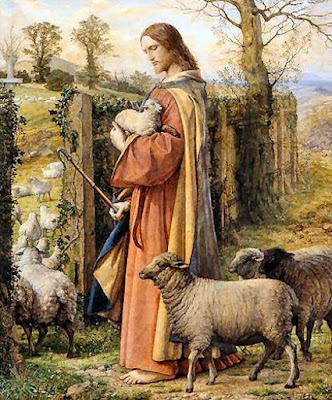In the mid-10th century there was a king in England whose name was Edgar the Peaceable. Not that he was a peaceable man himself – he wasn’t. But he brought peace to the English, and it is that for which he is remembered.
His elder brother, Eadwig, had been king before him. Eadwig was a rather disagreeable man who brought discord to the land. His reign was known most for the conflict between his noblemen and the Church, which Eadwig had fueled by exiling some of the prominent clergy, which included St. Dunstan.
Eventually people tired of the turmoil and disunity under Eadwig, and it was then that they switched their allegiance to Edgar the Peaceable. This opened up all sorts of opportunities for rebuilding a stable society, because Edgar saw the importance of the place of the Church in the nation. He immediately called St. Dunstan back from exile, requesting that he be made a bishop. St. Dunstan remained King Edgar’s advisor for the rest of his reign.
Having St. Dunstan at his side meant that King Edgar could repair the great damage that had been done to the monasteries throughout the land. A series of attacks from the Danes had all but destroyed these important centers of learning and pastoral care, and it was at St. Dunstan’s urging that King Edgar sought out St. Ethelwold and St. Oswald, petitioning also that they be made bishops. The combined efforts of these three saints meant that the monasteries were restored, which assisted in making England unified as a nation.
We see in the story of these three great British saints the importance of seeking cooperation between the Church, with her preaching of the Gospel and her work of teaching and sanctifying, and the State, with its responsibility to uphold the law and good order of society. When the Church and the State work in harmony, each respecting the God-given role of the other, the good fruits which come from that are undeniable.
St. Dunstan, St. Ethelwold, and St. Oswald carried out God’s work faithfully. They sought no honour for themselves, but rather they brought honour to God and His Church by teaching the faith, providing the Sacraments, and showing that ultimately God must be the King of every nation.
We beseech thee, O Lord, graciously to hear the prayers which we offer unto thee on this feast of thy bishops Ss. Dunstan, Ethelwold and Oswald: that like as they were found worthy to do thee faithful service in reforming and administering thy church; so, by their example, we too may have a singular zeal for upholding thy household; through Jesus Christ thy Son our Lord, who liveth and reigneth with thee in the unity of the Holy Ghost, ever one God, world without end. Amen.
____________________________________
Pictured: "The Three Orders of Medieval Society"


_-_Nationalmuseum_-_18677.tif.jpg)











